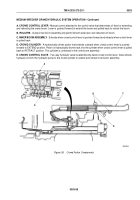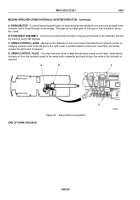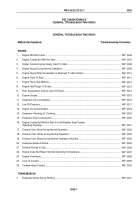TM-9-2320-272-23-1 - Page 268 of 1313
FIELD MAINTENANCE
GENERAL TROUBLESHOOTING
INTRODUCTION
1.
This chapter provides information needed to diagnose and correct malfunctions of mechanical, electrical,
and compressed air and brake system at the field level of maintenance.
2.
The troubleshooting procedures in this section cannot give all the answers or correct all vehicle malfunctions
encountered. However, these procedures are a step-by-step approach to a problem that directs tests and
inspections toward the source of a problem and a successful solution.
3.
Principles of operation showing wiring diagrams for each system can be found in Theory of Operation
(WP
0003). The wiring schematic (Volume 5, WP
0828) and point to point schematics show the
interrelationship of these systems. Both should be utilized as references when performing troubleshooting
procedures.
4.
The compressed air schematic (Volume 5, WP
0828) and point to point schematics show the
interrelationship of the compressed air and brake system. Both should be used as a reference when
performing troubleshooting procedures.
5.
Each malfunction symptom given for an individual component or system is followed by step(s) to determine
the cause and corrective action you must take to remedy the problem.
6.
Before taking any corrective action for a possible malfunction, the following rules should be followed:
a.
Question operator to obtain any additional information that might help you to determine the cause
of the problem.
b.
Never overlook the chance the problem could be of a simple origin. The problem could require only
a minor adjustment.
c.
Use all senses to observe and locate troubles.
d.
Use test instruments and gauges to help you determine and isolate problems.
e.
Always isolate the system where the malfunction occurs and locate the defective component.
f.
Use standard automotive theories and principles when troubleshooting the vehicles covered in this
manual.
g.
Operate the vehicle yourself to ensure the operator’s description of the problem is correct.
7.
This section cannot list all malfunctions that may occur. If a malfunction occurs that is not listed in the index,
notify supervisor.
8.
If malfunction corrective action does not correct malfunction, notify supervisor.
EXPLANATION OF TROUBLESHOOTING PROCEDURES
Troubleshooting procedures are defined as follows:
1.
STEP
: An action or process taken to isolate cause of fault.
2.
CONDITION/INDICATION
: States possible fault that may cause the symptom.
3.
DECISION
: Action required to move forward with next step or correct the fault.
END OF WORK PACKAGE
TM 9-2320-272-23-1
0004
0004-1/2 blank
Back to Top




















